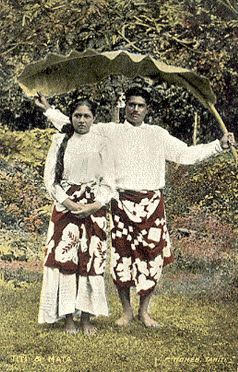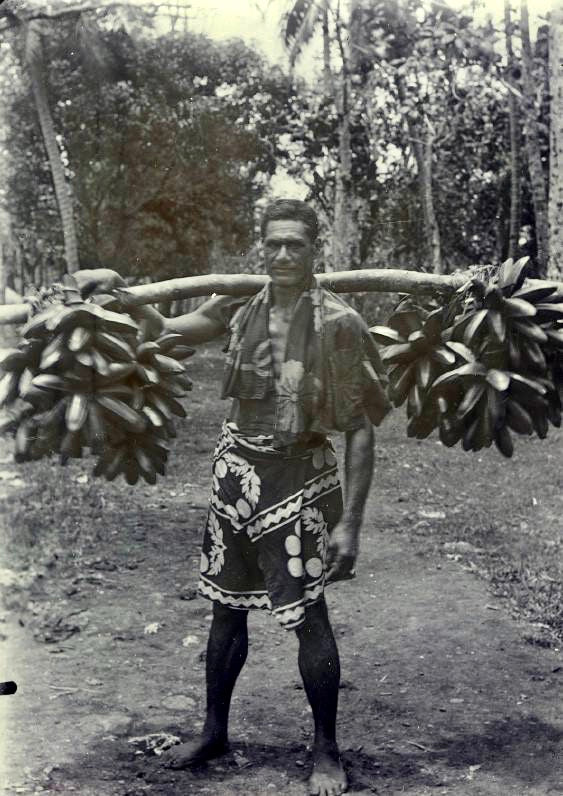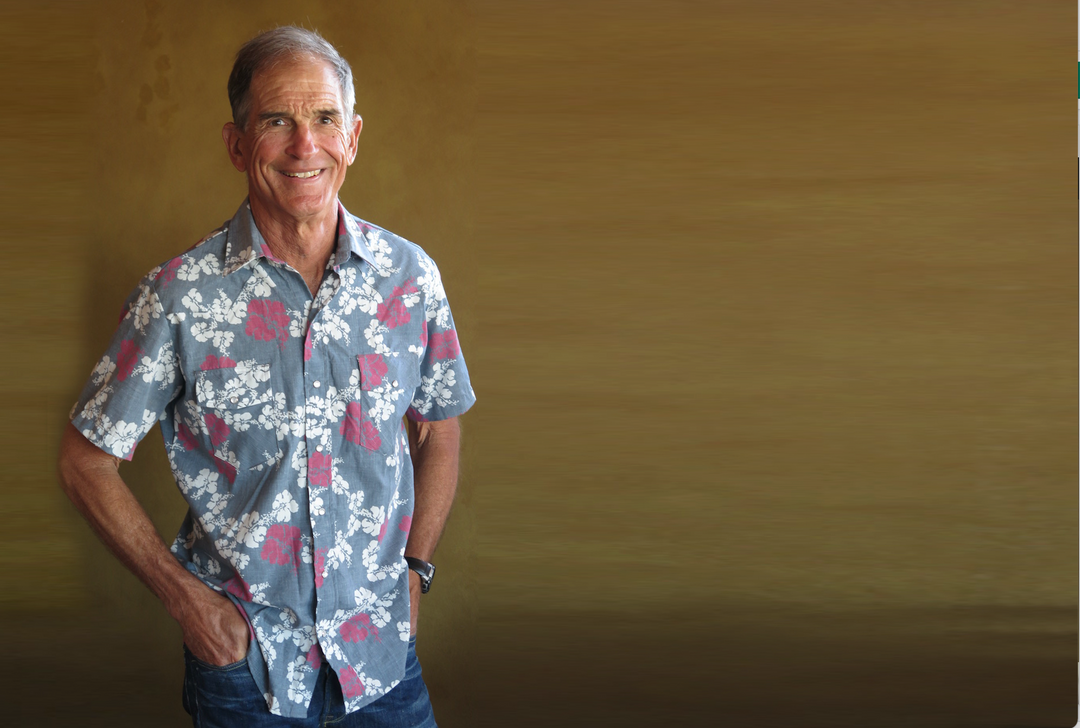Beginnings
The pareu is the fabric of paradise, the perfect weight and style for the tropics. It is a lightweight printed cloth garment that first came to Tahiti with Europeans in trade for prized goods like vanilla and sandalwood. While the Europeans expected the pareu to be worn as a wrap, the Tahitians began to use it far more creatively. When European missionaries tried to insist that the Tahitians wear only white clothing, the Tahitians instead preferred the bright floral prints of the pareu, which they found suitable not only as a wrap but for pretty much any occasion.

While the earliest pareus from Europe had designs that looked similar to fabric being traded in India or Africa, the Tahitians eventually began to make their own pareus printed with motifs inspired by the local flowers and plants. {A similar adoptive process occurred in Hawaii with Aloha shirt fabric.} Over time, the pareu was woven by the Tahitians into their own cultural identity. According to Dale Hope, who is writing a companion to his Aloha shirt book that will focus exclusively on the pareu:
“In Tahiti, flowers were worn in nearly everyone’s ear, men and women alike. And men and women also wore the pareu, predominantly navy and white or red and white traditional Tahitian floral prints. These florals said Tahiti to me. Clean and well-balanced with the floral motifs and ample solid ground space, your eye could settle in and appreciate all the elements of the print."

During the 1930s, the motifs and colors of the pareu began to influence the fabrics being used in Hawaii for Aloha shirts. The early Aloha shirt makers like George Brangier and Nat Norfleet would make trips to Tahiti to buy pareu cloth, which they would bring back to Hawaii to have cut and sewn into shirts and dresses. By the 1950s, the pareu print had become a distinct and very popular design style for the Aloha shirt. For people like Dale, the pareu even became their preferred print:

“As a young child growing up with parents who were garment manufacturers, they always let me pick my shirts from the fabrics in their factory. And even back before I was even a teenager, my first shirt choices were alway Tahitian-inspired pareu prints.”
-Dale Hope





